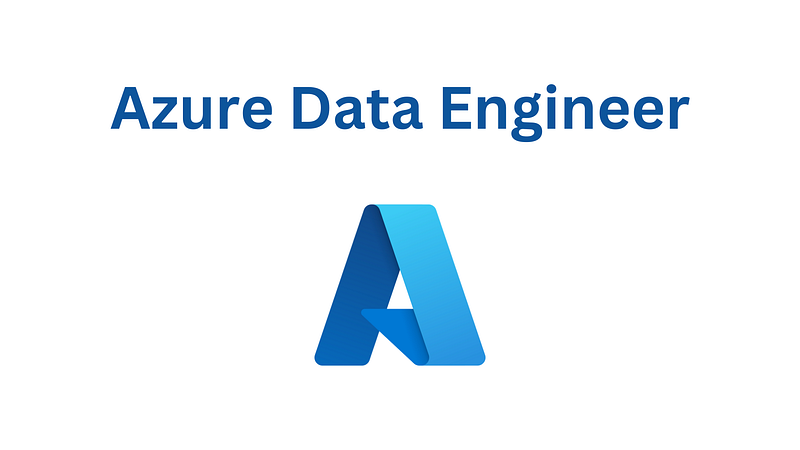Pathway to Becoming an Azure Data Engineer in 2024
Written on
Chapter 1: Introduction to Azure Data Engineering
Embarking on the journey to become an Azure Data Engineer requires a solid grasp of various skills and a comprehensive understanding of the data engineering landscape within the Azure framework. This guide provides an in-depth overview of the crucial skills and certifications you need to thrive in this domain.

Chapter 1.1: Mastering SQL
SQL forms the backbone of data engineering. Here are the essential concepts to master:
- SELECT Statements: Learn how to retrieve specific data from databases.
- WHERE Clauses: Apply conditions to filter data based on defined criteria.
- JOIN Operations: Explore various types of joins (INNER, LEFT, RIGHT, FULL) to merge data from different tables.
- GROUP BY and HAVING: Aggregate data and filter groups according to certain conditions.
- Subqueries and CTEs: Craft complex queries by nesting them or utilizing temporary result sets.
- Indexes: Enhance database performance by understanding how and when to implement indexes.
- Window Functions: Execute calculations across a set of rows related to the current row.
- Transactions and Locks: Ensure data integrity and consistency through transaction management.
Chapter 1.2: Learning Python for Data Engineering
Python is vital for automating data processes and managing extensive datasets. Focus on the following areas:
- Data Structures: Become proficient with lists, dictionaries, sets, and tuples for effective data manipulation.
- Pandas and NumPy: Utilize these libraries for data manipulation and numerical operations.
- File Handling: Read from and write to various file formats such as CSV, JSON, and Excel.
- Data Cleaning: Develop techniques for managing missing data, removing duplicates, and resolving inconsistencies.
- Regular Expressions: Use regex to process and clean text data.
- APIs and Web Scraping: Extract and process data from APIs or web pages.
- Data Visualization: Learn to present data trends using Matplotlib and Seaborn.
- Object-Oriented Programming (OOP): Structure your code effectively with classes and objects.
- Concurrency: Understand multithreading and multiprocessing for parallel task handling.
Chapter 1.3: Data Modeling Techniques
Data modeling focuses on organizing data for efficient storage and retrieval. Key areas include:
- Normalization: Reduce redundancy and dependency in databases by structuring fields and tables.
- Denormalization: Enhance read performance by merging tables when necessary.
- Dimensional Modeling: Develop star and snowflake schemas for analytical databases.
- ER Diagrams: Create entity-relationship diagrams to visualize and design database structures.
- Indexing: Strategically implement indexes to improve query performance.
- Data Warehousing Design: Master the design of data warehouses to support business intelligence needs.
Chapter 1.4: ETL Processes
ETL (Extract, Transform, Load) is fundamental for data movement and transformation:
- Extraction Techniques: Learn to gather data from diverse sources, including relational databases and APIs.
- Data Transformation: Clean, format, and convert data to meet business requirements with tools like Azure Data Factory.
- Loading Techniques: Efficiently transfer data into targets such as Azure SQL Database or Azure Synapse.
- Data Validation and Error Handling: Ensure data quality and manage errors effectively during ETL processes.
- Incremental Data Loads: Focus on loading only new or updated data.
- Pipeline Orchestration: Utilize Azure Data Factory or similar tools to automate and oversee intricate workflows.
Chapter 1.5: Deep Dive into Azure Data Services
Azure encompasses various data services crucial for an Azure Data Engineer:
- Azure SQL Database: A managed relational database service tailored for cloud applications.
- Azure Data Lake Storage: Scalable storage for big data analytics, accommodating both structured and unstructured data.
- Azure Synapse Analytics: A unified platform for data integration, big data, and data warehousing.
- Azure Databricks: Leverage Apache Spark for extensive data processing and machine learning.
- Azure Data Factory: Design and manage ETL pipelines for seamless data integration.
- Azure Stream Analytics: Efficiently process real-time data streams.
- Azure Cosmos DB: A multi-model database service designed for global-scale applications.
Chapter 1.6: Understanding Big Data Technologies
As an Azure Data Engineer, familiarity with big data technologies is essential:
- Apache Spark: Get to know Spark’s APIs for big data processing and analytics.
- RDDs (Resilient Distributed Datasets) and their transformations.
- DataFrame and Dataset APIs: Work with data frames and datasets for structured data.
- Spark SQL Functions: Utilize SQL functions within Spark for enhanced data manipulation.
- Understanding Cluster Configurations: Learn how to configure and manage Spark clusters effectively.
Chapter 2: Data Security and Compliance
Data security is crucial, particularly within cloud environments:
- Encryption: Implement encryption for data at rest and during transmission.
- Access Control: Utilize Azure Active Directory and role-based access control (RBAC) for managing user permissions.
- Compliance Standards: Ensure adherence to regulations like GDPR and HIPAA.
- Auditing: Track data access and modifications for compliance and security.
Chapter 3: Essential Certifications
To validate your expertise, aim for relevant certifications:
- Microsoft Certified: Azure Data Engineer Associate (DP-203): This certification covers the design and implementation of data storage, data integration and transformation, and ensuring security using Azure data services. It’s the most sought-after certification for aspiring Azure Data Engineers. You can explore more and register for the certification on the [Microsoft Certified: Azure Data Engineer Associate (DP-203)].
Description: This video provides an insightful roadmap for individuals aiming to become Azure Data Engineers in 2024.
Description: Join this free webinar to learn about the essential skills and certifications required for a successful career as an Azure Data Engineer in 2024.
Connect with me on LinkedIn: LinkedIn
If you enjoy reading my blogs, consider subscribing to my feeds. Additionally, if you're not a Medium member and wish to gain unlimited access to the platform, please feel free to use my referral link to sign up.